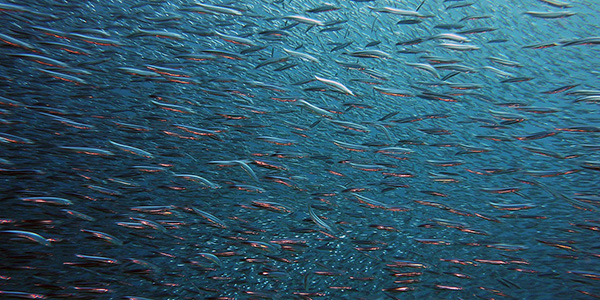Working on biodiversity and trade, a perspective from a government analyst
PhD student Marco Franzoi gives his thoughts on biodiversity and the risks that it can be subjected to.

When I think about biodiversity and the risks to it, I tend to think about domestic or local nature and biodiversity, eg the impact of the now-rejected development near Askham Bog in York. However, the real extent of the impact of a country to biodiversity may be much broader, with severe impacts to nature overseas due to trade. In the past few years, acknowledgement of possible risks beyond borders has increased1, but understanding of how consumption in the Global North might affect global ecosystems via trade has been difficult to assess with precision, leading to unwanted consequences.
In light of the workshop on ‘Biodiversity and Trade’ I organised in October on behalf of Defra, I wanted to provide here some thoughts and points that have transpired from these conversations/the workshop that might be of interest to other biodiversity-minded.
The growing demand for evidence
In the first part of the workshop, we discussed the evidence of the impacts of trade and consumption on global ecosystems.
Although results differ across studies, recent analysis of consumption patterns identified that around 30% of biodiversity loss is caused by international trade. These impacts are unevenly located across the globe: 50% of biodiversity impacts of developed countries, including the UK, are not domestic2. Basically, the Global North is importing biodiversity loss from the Global South.
On top of this, biodiversity loss from land degradation (eg salinisation, soil erosion, etc.) is not included in most of these studies, making it even more difficult to assess the real impacts a country has abroad. Yet, the IPBES3 estimates that land degradation caused by agricultural intensification is negatively impacting the wellbeing of at least 3.2 billion people, and international trade is considered a major indirect anthropogenic driver of land degradation.
Similarly, (or possibly worse) assessments of trade impacts on marine biodiversity, eg due to the trade of fisheries commodities, struggle to provide a holistic perspective of the risk. This is due to issues with precise trade and production data for fish commodities, as well as difficulties in assessing biodiversity impacts of fishing4.
What type of action can be taken
The second section explored how both domestic and trade policies might affect biodiversity offshoring, both negatively by increasing global biodiversity and positively as levers to stop and reverse these impacts.
Domestic policies in developed countries aimed at protecting the environment might also have unwanted consequences. Advanced analysis focussing on carbon, which can give us a preview of possible risks to biodiversity, shows how carbon pricing in agriculture in the EU might lead to an increase in global emissions5. Certain land sharing approaches in agriculture may also generate higher costs and inefficiency of production in the UK6 with possible negative impacts on biodiversity in other countries. At the workshop, experts identified a need to have a holistic and consumption-based perspective when undertaking domestic policies, independently of whether they are environmentally focussed or not.
Simultaneously, trade policies without clear environmental protections have been linked to deforestation and consequently biodiversity loss7. Yet trade and biodiversity are rarely analysed together, and even less thought about politically and legally. It is unclear whether WTO regulations provide ways to include biodiversity concerns into existing permitted trade policies; unilateral and bilateral actions have been limited; and finally international agreements, such as COP15 Kunming-Montreal, didn’t entail any mandatory trade-related biodiversity targets.
However, I wouldn’t want to finish on such a defeatist note. Fair and equitable trade and international can still offer solutions: strong environmental commitments in our trade policy strategy can reduce offshoring risks; on the international stage multilateral initiatives and even actions (such as the very imperfect agreement on IUU subsidies) are ongoing and with enough pressure might lead to positive changes. So, whilst this was only a short and incomplete snippet of the risk of trade to biodiversity, the increase in evidence and awareness might provide hope to tackle this difficult issue, maybe.
References
- SEI/JNCC (2023) Commodity Footprints Dashboard (www.commodityfootprints.earth). Croft, S., West, C., Harris, M., Egan, C., Green, J., Molotoks, A., Wood, E. and Way, L. 2023. Technical documentation for an official statistic in development estimating the global environmental impacts of UK consumption: 2023 Version. JNCC Report 746, JNCC, Peterborough, ISSN 0963-9091. https://hub.jncc.gov.uk/assets/7a4063c9-a221-4ca1-ab6a-3b2fae544b32
- Irwin, 2022. Quantifying and categorising national extinction-risk footprints https://www.nature.com/articles/s41598-022-09827-0.
- IPBES (2018): The IPBES assessment report on land degradation and restoration. Montanarella, L., Scholes, R., and Brainich, A. (eds.). Secretariat of the Intergovernmental Science-Policy Platform on Biodiversity and Ecosystem Services, Bonn, Germany. 744 pages. https://doi.org/10.5281/zenodo.3237392
- Hélias, A., Stanford-Clark, C. & Bach, V. A new impact pathway towards ecosystem quality in life cycle assessment: characterisation factors for fisheries. Int J Life Cycle Assess 28, 367–379 (2023). https://doi.org/10.1007/s11367-023-02136-2
- Joint research committee, 2016. ECAMPA2: An economic assessment of GHG mitigation policy options for EU agriculture. https://publications.jrc.ec.europa.eu/repository/bitstream/JRC93434/jrc90788_ecampa_final.pdf
- Collas et al. (2023), The costs of delivering environmental outcomes with land sharing and land sparing, https://besjournals.onlinelibrary.wiley.com/doi/10.1002/pan3.10422
- Abman, 2022, https://documents1.worldbank.org/curated/en/980421616686312761/pdf/The-Effectiveness-of-Environmental-Provisions-in-Regional-Trade-Agreements.pdf or Tian et al, 2022